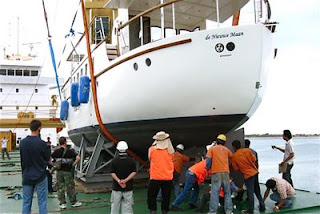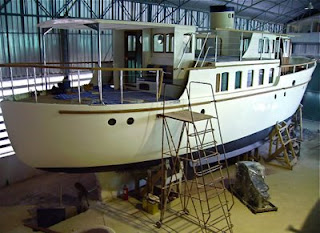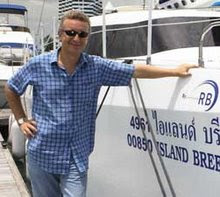Thailand is a Buddhist country so Christmas is not a holiday. Neither is Boxing Day, the day after. Which is just as well, because my crew and I had to be on hand to oversee the lifting of the recently launched TS60, De Nieuve Maan (or New Moon), a traditional gentleman's motor yacht designed by Albert Nazarov, from the water onto the deck of a cargo ship which will carry it to the Netherlands.
It was a slow, nerve-wracking operation – with the worst moment being when the TS60 was suspended in a sling over the ship's wide steel deck. It was then lowered slowly and carefully into its custom-built steel cradle before being lashed to the deck and covered.. Everything went off without a hitch and the ship is already well on its way with its valuable cargo.
It was a slow, nerve-wracking operation – with the worst moment being when the TS60 was suspended in a sling over the ship's wide steel deck. It was then lowered slowly and carefully into its custom-built steel cradle before being lashed to the deck and covered.. Everything went off without a hitch and the ship is already well on its way with its valuable cargo.

































_of_IMGP0786.JPG)













